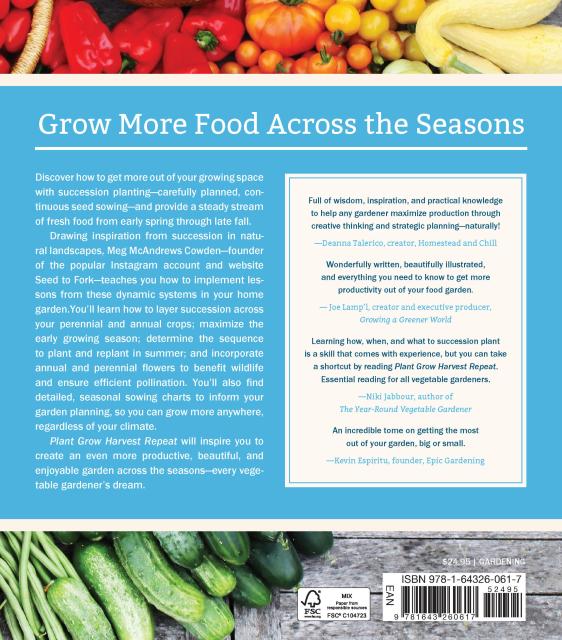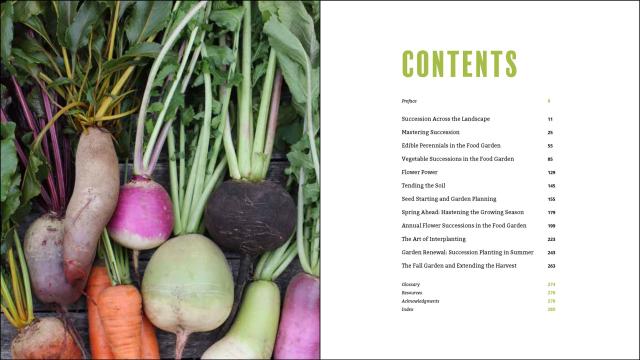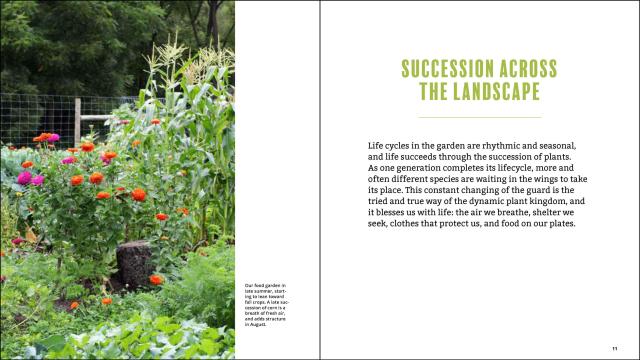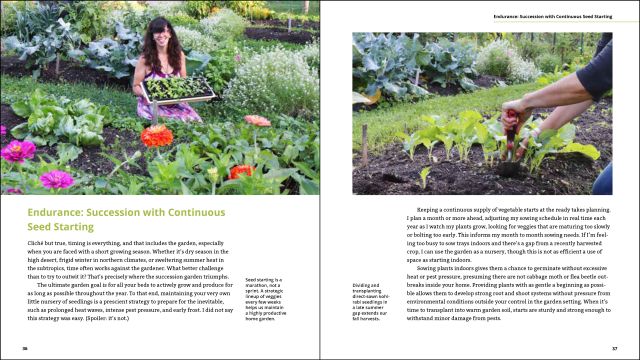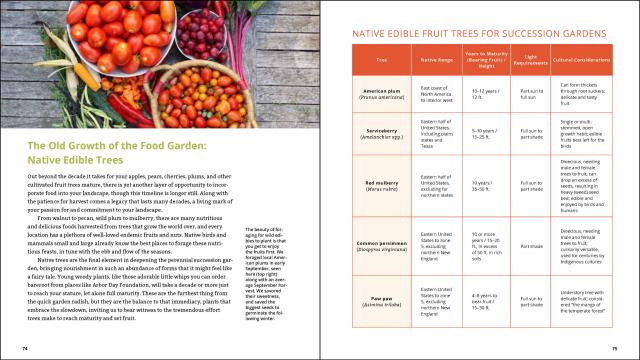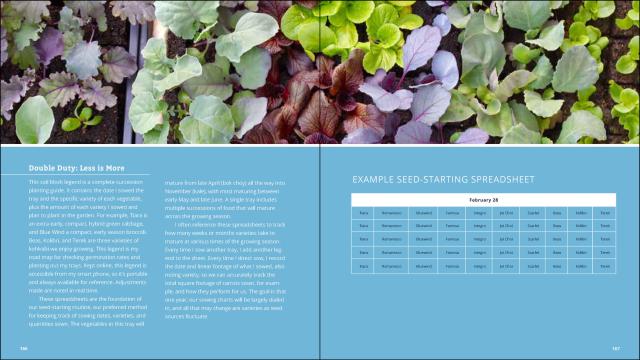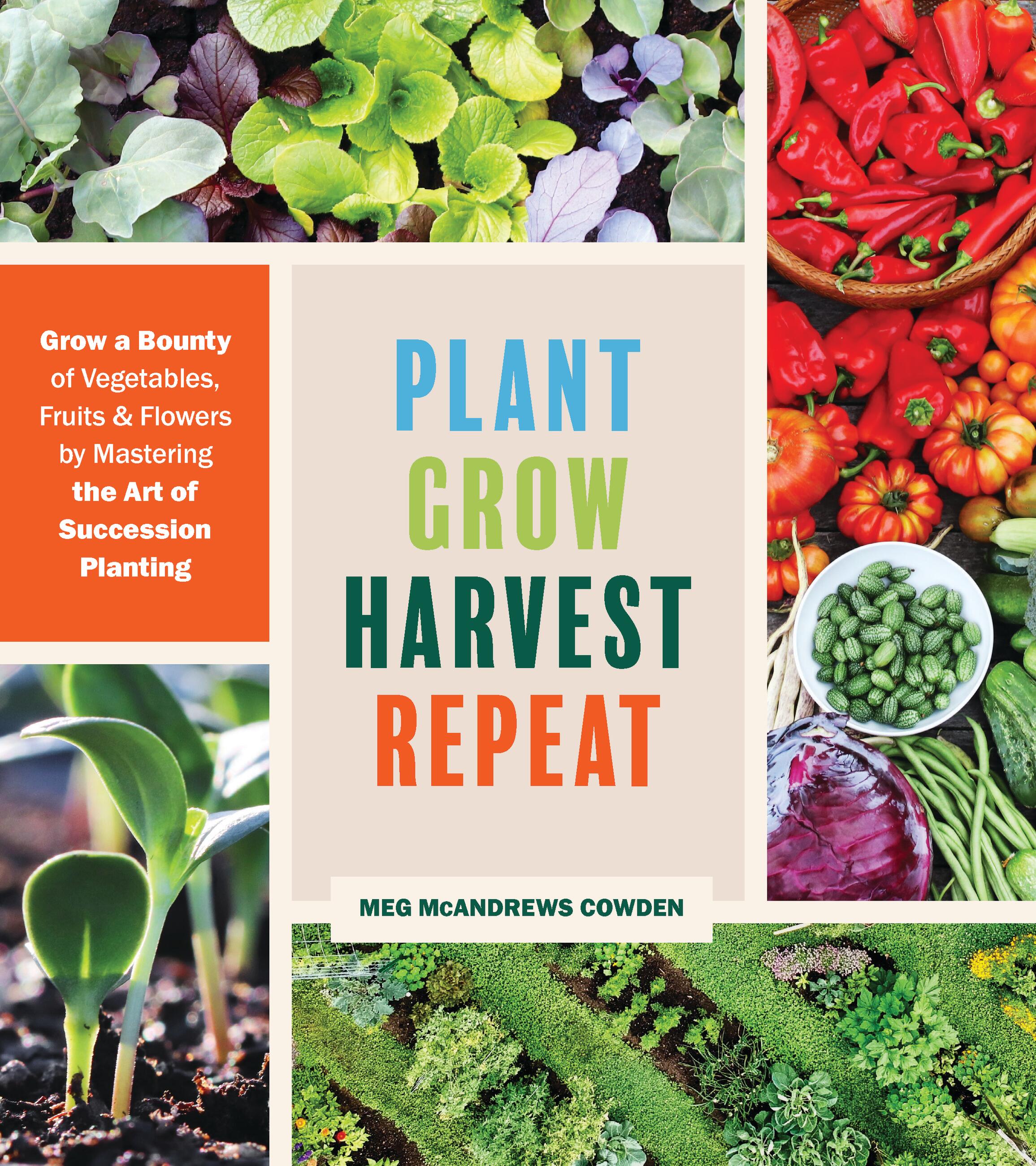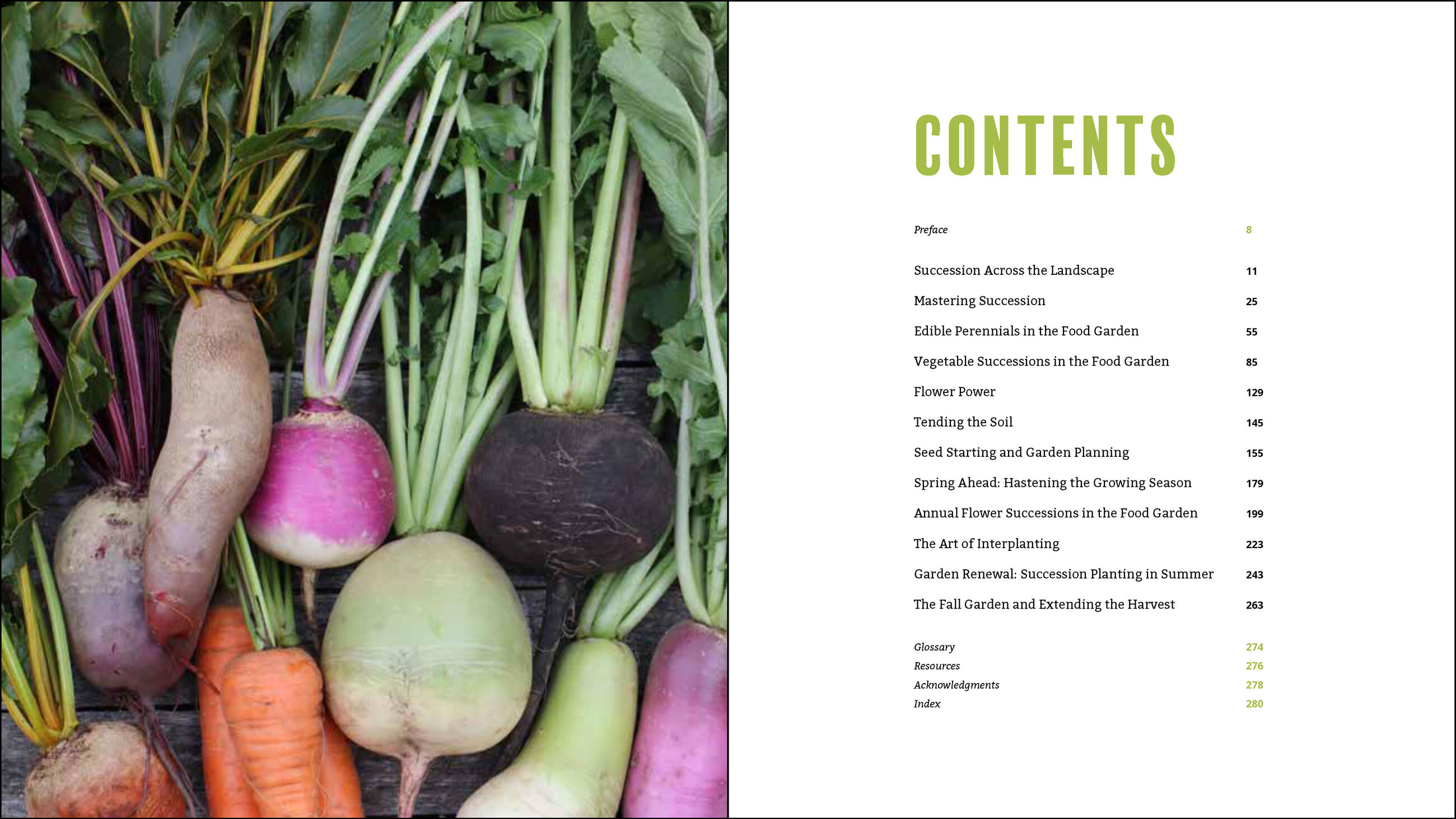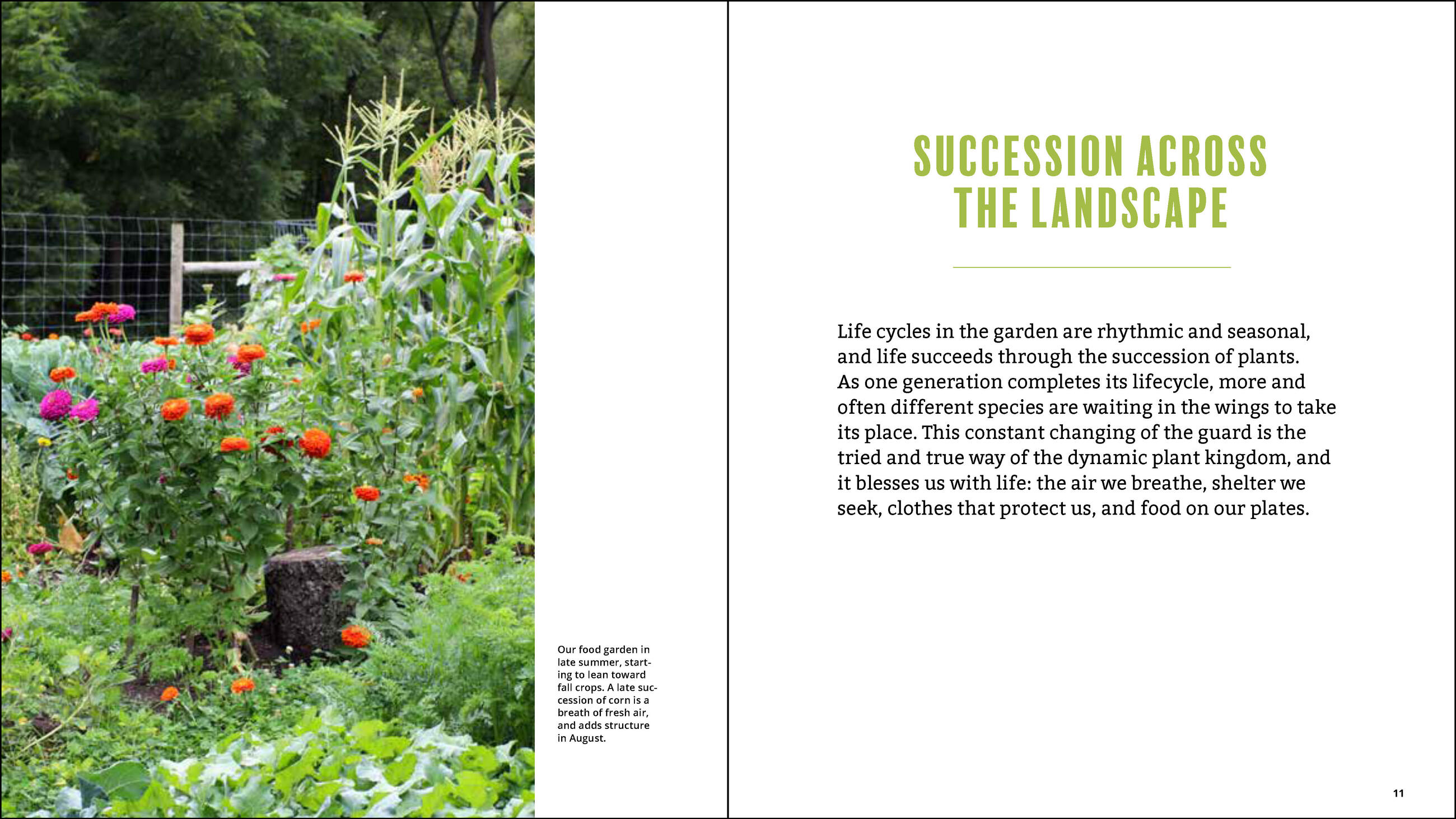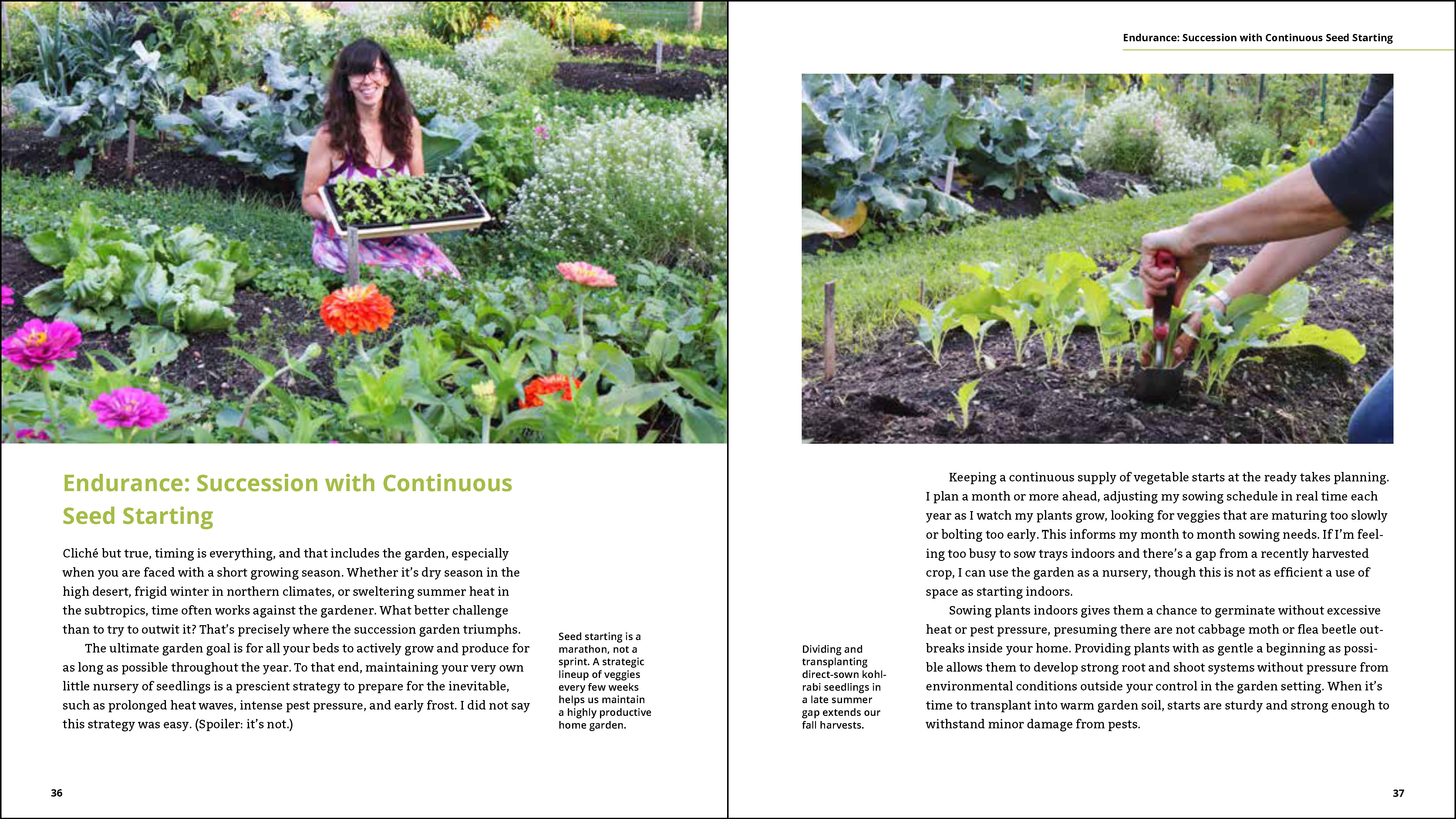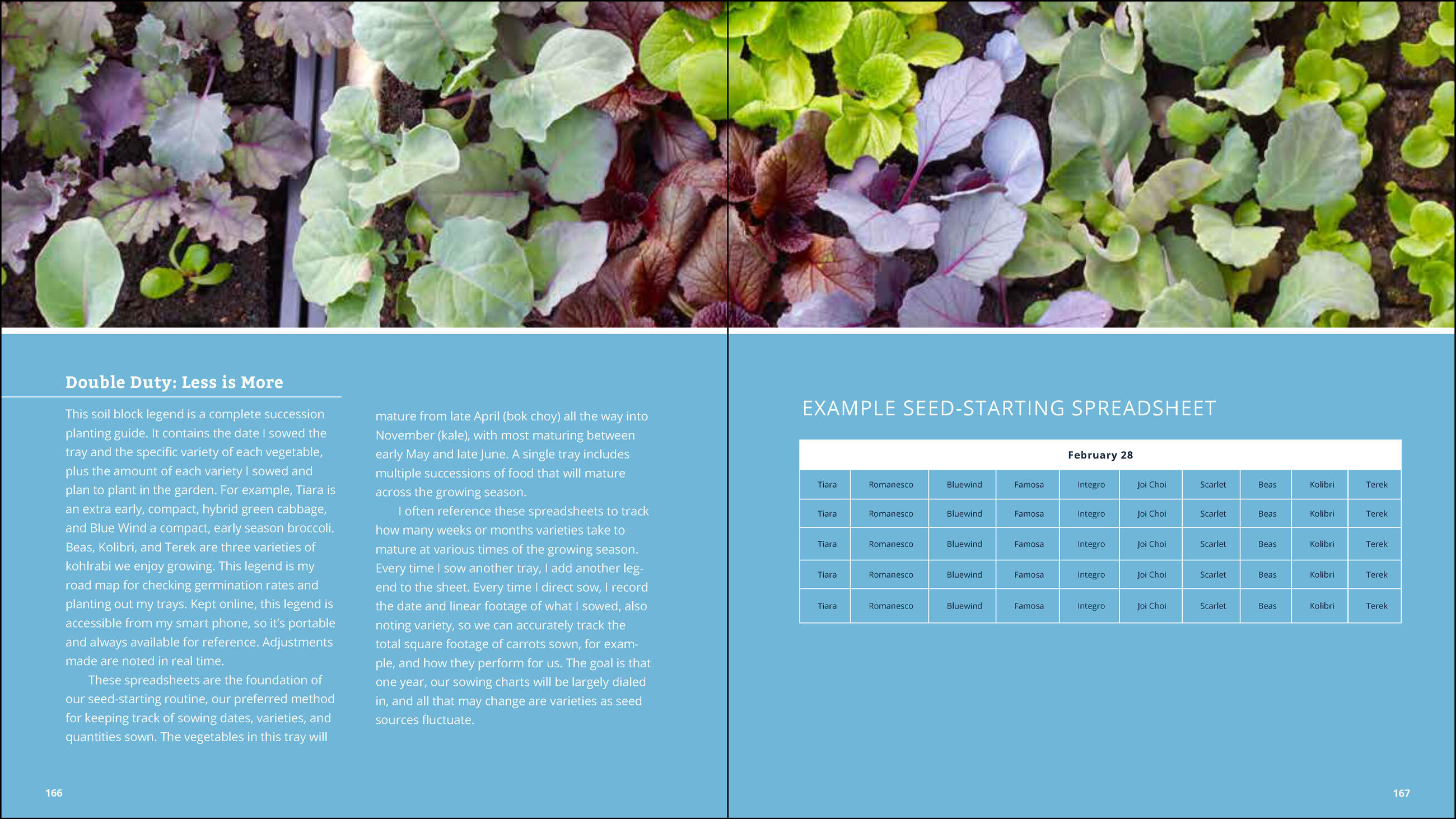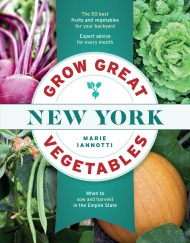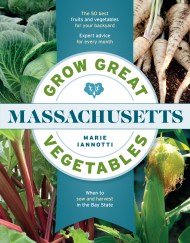Promotion
Use code BEST25 for 25% off storewide. Make sure to order by 11:59am, 12/12 for holiday delivery!
By clicking “Accept,” you agree to the use of cookies and similar technologies on your device as set forth in our Cookie Policy and our Privacy Policy. Please note that certain cookies are essential for this website to function properly and do not require user consent to be deployed.
Plant Grow Harvest Repeat
Grow a Bounty of Vegetables, Fruits, and Flowers by Mastering the Art of Succession Planting
Contributors
Formats and Prices
- On Sale
- Mar 15, 2022
- Page Count
- 288 pages
- Publisher
- Timber Press
- ISBN-13
- 9781643260617
Price
$24.99Price
$30.99 CADFormat
Format:
- Trade Paperback $24.99 $30.99 CAD
- ebook $11.99 $15.99 CAD
This item is a preorder. Your payment method will be charged immediately, and the product is expected to ship on or around March 15, 2022. This date is subject to change due to shipping delays beyond our control.
Buy from Other Retailers:
Discover how to get more out of your growing space with succession planting—carefully planned, continuous seed sowing—and provide a steady stream of fresh food from early spring through late fall.
Drawing inspiration from succession in natural landscapes, Meg McAndrews Cowden teaches you how to implement lessons from these dynamic systems in your home garden. You’ll learn how to layer succession across your perennial and annual crops; maximize the early growing season; determine the sequence to plant and replant in summer; and incorporate annual and perennial flowers to benefit wildlife and ensure efficient pollination. You’ll also find detailed, seasonal sowing charts to inform your garden planning, so you can grow more anywhere, regardless of your climate.
Plant Grow Harvest Repeat will inspire you to create an even more productive, beautiful, and enjoyable garden across the seasons—every vegetable gardener’s dream.
Genre:
-
“Meg is always a wealth of information on succession planting and we cover her best tips for mastering the art of that gardening method and extending the growing season.” —The Joe Gardener ShowPublishers Weekly “[An] inventive, commonsensible, effectively illustrated guide…A useful guide for readers in any hardiness zone, but especially those whose growing season is pinched—and just in time for the 2022 growing year.” —Booklist “The wealth of useful information in this book will encourage you to start maximizing your vegetable garden harvests.” —Susan’s in the Garden “Plant Grow Harvest Repeat is your guide to jumping into the growing season at any point or dusting yourself off and after a crop failure…Above all, the book is an encouragement to experiment and expand your garden’s goodness." —The Seattle Times
“Full of wisdom, inspiration, and practical knowledge to help any gardener maximize production through creative thinking and strategic planning—naturally!”—Deanna Talerico, creator, Homestead and Chill
“Wonderfully written, beautifully illustrated, and everything you need to know to get more productivity out of your food garden.” —Joe Lamp’l, creator and executive producer, Growing a Greener World
“Cowden is encouraging, offering a variety of tools for gardeners to try in their own spaces, but understanding that gardeners like the gardens they tend move and grow at their own pace.” —The Northern Gardener
“Learning how, when, and what to succession plant is a skill that comes with experience, but you can take a shortcut by reading Plant Grow Harvest Repeat. Essential reading for all vegetable gardeners.”—Niki Jabbour, author of The Year-Round Vegetable Gardener
“An incredible tome on getting the most out of your garden, big or small.”—Kevin Espiritu, founder, Epic Gardening
“This master class will entice seasoned gardeners and newbies alike.” -
“Meg is always a wealth of information on succession planting and we cover her best tips for mastering the art of that gardening method and extending the growing season.” —The Joe Gardener ShowPublishers Weekly “[An] inventive, commonsensible, effectively illustrated guide…A useful guide for readers in any hardiness zone, but especially those whose growing season is pinched—and just in time for the 2022 growing year.” —Booklist
“Full of wisdom, inspiration, and practical knowledge to help any gardener maximize production through creative thinking and strategic planning—naturally!”—Deanna Talerico, creator, Homestead and Chill
“Wonderfully written, beautifully illustrated, and everything you need to know to get more productivity out of your food garden.” —Joe Lamp’l, creator and executive producer, Growing a Greener World
“Cowden is encouraging, offering a variety of tools for gardeners to try in their own spaces, but understanding that gardeners like the gardens they tend move and grow at their own pace.” —The Northern Gardener
“Learning how, when, and what to succession plant is a skill that comes with experience, but you can take a shortcut by reading Plant Grow Harvest Repeat. Essential reading for all vegetable gardeners.”—Niki Jabbour, author of The Year-Round Vegetable Gardener
“An incredible tome on getting the most out of your garden, big or small.”—Kevin Espiritu, founder, Epic Gardening
“This master class will entice seasoned gardeners and newbies alike.”
Newsletter Signup
By clicking ‘Sign Up,’ I acknowledge that I have read and agree to Hachette Book Group’s Privacy Policy and Terms of Use

